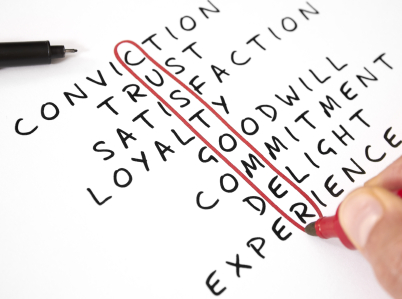 I can’t think of a single company that couldn’t improve their customer relations and loyalty programs.
I can’t think of a single company that couldn’t improve their customer relations and loyalty programs.
True, there are amazing examples of world-class customer programs out there. From Zappos to Zingerman’s, there’s plenty to observe and emulate.
But generally, I find that companies either completely under-invest in the customer side of marketing (vs. acquisition marketing), or they create such ambitious plans that they fail to successfully execute the big picture and instead hit a bunch of weak base hits on a number of initiatives that never stand out and fail to impress customers.
And yet it’s often the little things you do every day, the culture you foster and how you execute on that at all levels of the organization, that really sets the companies apart that have not just happy customers but zealous advocates and ambassadors.
Below are a handful of simple things companies can do to create massive differentiation and impressions with their customers. Some are easier said than done, but few if any of these require massive marketing programs or resources.
1. Be accessible
Stop sending emails from “info@” and (worse) “donotreply@”. Put your phone number everywhere. Pick up the phone when it rings, by a live person, before it rings a second or third time. Add instant messaging or chat options to your product, app and/or Web site.
If you already have customer-facing teams, these tools and tactics can just flow straight to them. The volume will be lower than you think, but you’ll get major kudos from your customers for merely increasing the ease of access should they have questions.
2. Be honest
There’s a thin line between spinning and lying. Don’t go there. If you need to spin something, re-think whether it’s better to just buck up, tell the truth, explain why that is and what you’re doing about it.
I’ve seen time and time again companies fret over exactly how to share bad news with customers. Yet when they ultimately decide to be honest and straightforward, their customers reward them for it.
3. Listen (and take it seriously)
This is a two-part job. First you listen. Actively. Make it abundantly clear that you care about their feedback. But if you don’t then actively triage and do something about that feedback, customers will assume you weren’t really listening in the first place.
This doesn’t mean you have to do everything customers tell you to do. Sometimes simply acknowledging their feedback is all that’s needed.
4. Respond
Nobody in the organization is beyond direct and swift communication with customers. I’m still shocked when I see C-level employees delegate customer communication to their teams rather than reply directly.
Consider setting standards for follow-up with customers and prospects. How quickly should an email be returned? How quickly should a question be answered or problem resolved?
5. Apologize
I love what Zingerman’s does for their deli & catering business in Ann Arbor, Michigan. Their four step process for apologizing goes like this: 1) Acknowledge the complaint, 2) Apologize for the inconvenience, 3) Thank them for bringing it to your attention, and 4) Ask what you can do to make it right.
According to Zingerman’s, the vast majority of the time your customers will ask for something to “right the wrong” that’s far less than what you were prepared to give (and oftentimes they’ll simply be happy you took it so seriously in the first place).
6. Talk with (not at) your customers
Gone are the days of one-way communication with customers (if they ever existed). But this goes beyond replying to email or hosting a user forum somewhere online.
It also means engaging as a peer with your customers. Becoming one of them. Conducting yourself in a way that puts you on the same level as, and not above, your customers.
7. Speak plain English
Or Spanish or whatever language you need. But avoid big words. This isn’t the New Yorker. Use conversational language everywhere – your Web site, user manuals, email templates, etc.
The more you speak a plain language, the easier it will be for customers to align with you, believe you, and trust you as one of them.
8. Hire & train for customer-centric values
Perhaps more important than anything is to hire people who already naturally understand the seven attributes above. Yes, you can train for these and create systems in your organization that make them easier to execute.
But the more you find people who already get it, who already live it, the more consistently you’ll be able to both execute and improve on these differentiators to deepen customer loyalty, retention and lifetime value.
Would love to hear in the comments what I’ve missed in this list. What’s been key to customer loyalty in your organization?

Pingback: Eight simple things that quickly lead to custom...